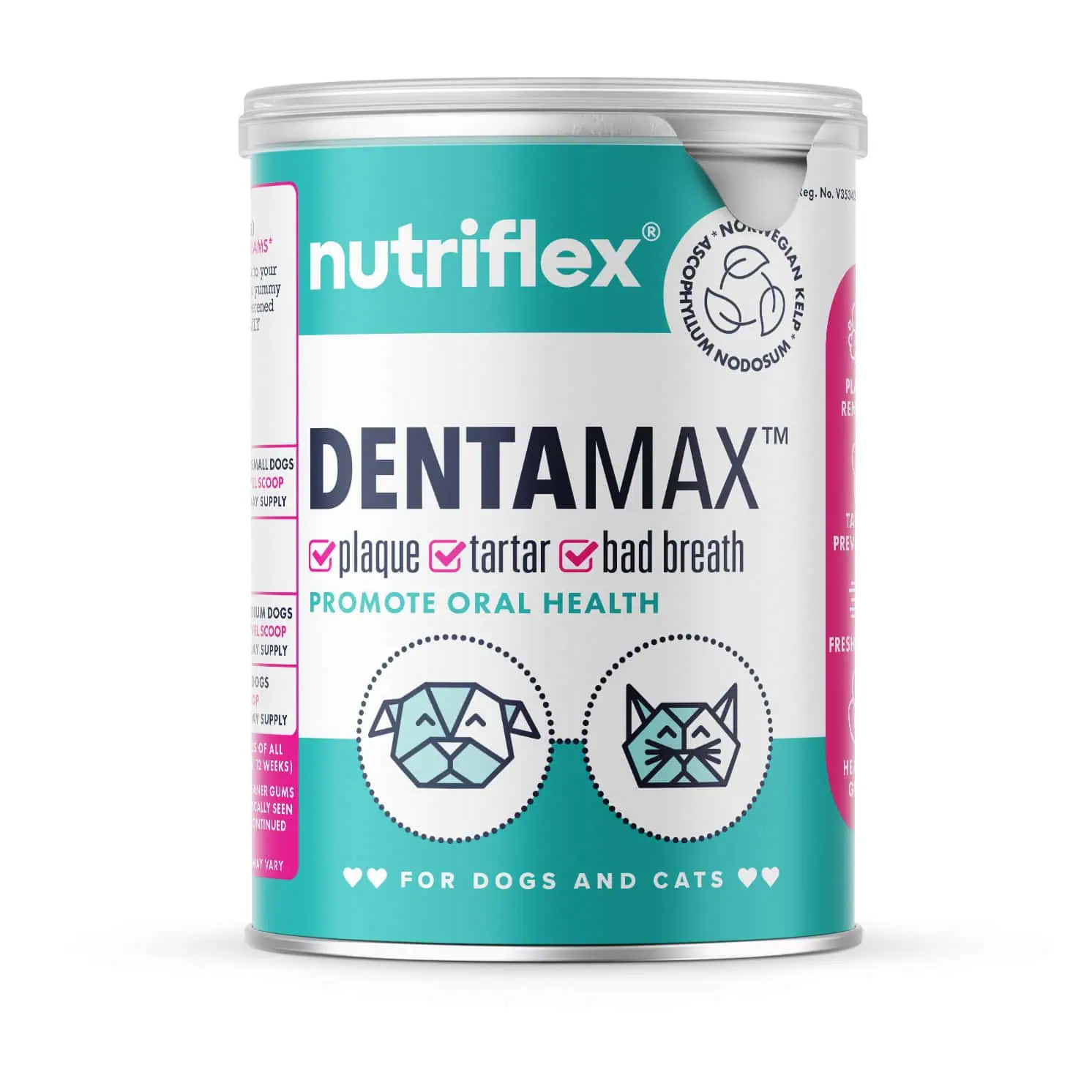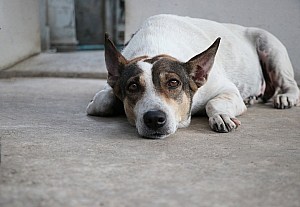Maintaining healthy teeth is essential for everyone, not just humans. Consider the pain of toothache or the embarrassment of bad breath. Similarly, our four-legged friends also deserve attention when it comes to their dental health. Every responsible pet parent would undoubtedly agree that their furry friend’s well-being is paramount. So, why overlook their oral care? What are the implications of neglecting a dog’s dental hygiene? And what might be the financial cost to restore your beloved canine’s radiant grin?
Why is Dental Health Vital for Your Dog?
For humans, dental care isn’t just about health; it’s also about having minty, fresh breath and a captivating smile. While our canine companions don’t seek a picture-perfect grin, their dental well-being is crucial for more basic yet fundamental reasons. Healthy teeth and gums enable dogs to eat without discomfort, exhibit natural behaviours, and remain free from pain and infections. Strong and healthy teeth are essential for a dog’s daily activities, such as picking up food, chewing, and engaging with toys and treats.
How Can You Ensure Your Dog’s Dental Health?
Regularly brushing your dog’s teeth is the most effective method of maintaining your pet’s dental health and oral hygiene. For comprehensive tips on canine dental care, refer to our in-depth guide, which outlines essential practices and precautions.
While veterinarians typically assess your dog’s teeth during routine vaccination visits, you should consult your vet sooner if you notice any issues or have concerns about your dog’s dental health.
What Are The Consequences of Neglecting Your Dog’s Dental Health?
Neglecting regular oral care can lead to a gradual decline in your dog’s dental health. The potential repercussions of overlooking your dog’s dental hygiene include:
Periodontal Disease:
Consistent neglect of your dog’s dental hygiene can lead to bacterial growth, forming plaque on their teeth and below the gum line. Over time, plaque accumulation can cause inflammation and mineralise into tartar (calculus). To combat periodontal disease in dogs, a dental intervention, such as scaling and polishing, becomes necessary to eliminate hardened tartar. While humans can schedule an appointment with their dental hygienist, dogs must undergo anaesthesia for a stress-free and safe procedure. Afterwards, pain relief and antibiotics might be essential for their smooth recovery.
Tooth Loss:
Advanced periodontal disease can compromise the structures anchoring the tooth in place. As the disease progresses, there’s a recession of the gums, and the bone enveloping the tooth root erodes. Consequently, the tooth can become loose, leading to either natural loss or necessitating extraction. Notably, a dog’s canine teeth possess extensive roots, while some molars have up to three roots. Extracting these teeth can be intricate and may necessitate a surgical approach, which might involve drilling away a portion of the jawbone for successful removal.
Abscess Formation:
A dog’s mouth is naturally teeming with bacteria. When a tooth root becomes exposed or when there’s inflammation causing the gum to lose its protective seal, bacteria can infiltrate the tooth socket, leading to a malar or tooth root abscess. This infection often extends to the sinuses, resulting in noticeable swelling beneath the dog’s eye. Furthermore, an abscess can form if the dog breaks a tooth, exposing its inner pulp. Such malar abscesses are painful for the dog and necessitate prompt veterinary intervention.
Pain and Discomfort:
The onset of periodontal disease can inflict pain, a distressing realisation for dog owners who aspire to ensure their pets lead happy, pain-free lives. The pain can vary from the mild discomfort of gingivitis to the intense agony resulting from abscesses or infections. It’s essential to understand that while dogs might not verbally express their discomfort, there are clear signs of distress if one observes closely. Remaining observant ensures that your beloved pet doesn’t endure pain in silence. Perhaps you’ve watched a dwindling interest in food, reluctance to accept treats, or hesitation when playing with toys. They may drop food while eating or show signs of pain, like yelping, when chewing on one side. Recognising these signs is crucial to addressing and alleviating their discomfort promptly.
Halitosis (Bad Breath):
While people often associate bad breath with humans, dogs aren’t immune. In fact, bad breath ranks as one of the most common complaints among pet parents. If your dog displays signs of poor dental health, it can be a nuisance and indicate a risk of more severe problems. Doggy breath, or halitosis, originates from bacterial buildup in the mouth. Although antibiotics temporarily alleviate the condition, the issue will likely resurface without appropriate dental care.
Weight Loss:
When your dog avoids eating due to oral discomfort, it inevitably leads to weight loss. Should your pet display significant weight reduction, a veterinarian might recommend a blood test before administering anaesthesia. Such a test ensures that the dog’s vital organs are functioning optimally and can safely cope with the effects of the anaesthetic.
Life-Threatening Infections:
A mouth rife with bacteria doesn’t merely put your dog at risk for oral infections. A severe dental infection can rapidly escalate into sepsis due to abundant blood vessels in the mouth and gums. Moreover, bacteria can occasionally traverse the bloodstream to the heart, resulting in endocarditis, an infection of the heart valves. Although these situations might be rare, they pose grave risks and can prove fatal. Bad teeth and poor dental health have been linked with kidney disease, liver complications, and even strokes in dogs.
To understand the significance of oral hygiene for dogs and the potential health risks of neglecting it, explore this informative article from PetMD.
BEST SELLER

PLAQUE TARTAR BAD BREATH
DentaMax Dental Powder for Dogs and Cats
348 Reviews
The secret to fresh breath and clean teeth powered by clinically proven seaweed. The result is visibly whiter teeth, cleaner gums and fresher breath for your pet within just 3 - 12 weeks. No tooth brushing is required.
- Eliminate bad breath
- Remove plaque accumulation
- Prevent tartar, tooth decay and gum disease
What Might You Expect to Pay for Veterinary Dental Treatment?
Performing dental procedures demands high expertise and can often be challenging and time-intensive. Having their furry friend undergo anaesthesia can be distressing for pet owners. Prevention is always preferable when it comes to your dog’s dental health. While the expense of medication and procedures can fluctuate based on location, your dog’s size, and the severity of your dog’s condition, the following provides a general price indication.
Antibiotics: To reduce bacterial levels and address existing infections, your dog might require antibiotics before undergoing a dental operation, ensuring the tissues can recover post-procedure. Additionally, antibiotics may be prescribed after the procedure, particularly if the dog has undergone a surgical tooth extraction.
Estimated cost for a week-long antibiotic course: ±R300
Pain Management: Dental issues frequently necessitate some form of pain management. Pain relief is typically administered post-tooth extractions to facilitate recovery and might be continued for about 5-7 days post-procedure. The intensity of the dog’s discomfort will determine the pain relief or anti-inflammatory medication.
Estimated cost for a week’s pain management: ±R300
Scaling and Polishing (Under Anaesthesia): When tartar accumulates on your dog’s teeth, removal becomes necessary. This dental procedure, known as scaling, employs an ultrasonic dental descaling tool to disintegrate the tartar. Once removed, the tooth surface undergoes high-speed polishing with abrasive prophy paste to achieve optimal cleanliness. However, it’s essential to understand that without consistent at-home care, the return of bacteria, plaque, and tartar is inevitable.
Estimated cost for scaling and polishing under anaesthesia: ±R4000
Overnight Stay
Veterinarians commonly advise that senior pets have an overnight stay following dental surgeries. This allows the veterinary team to closely monitor their recovery from anaesthesia and ensure they’re eating well before returning home.
Estimated cost for overnight stay: ±R5000
Dental X-rays: Just as dentists might occasionally take X-rays to assess your dental health, veterinarians also utilise dental X-rays to assess a dog’s tooth condition. These X-rays help determine if a tooth requires extraction or the root has an infection. They can also assist during complex extraction procedures. While some veterinary clinics include the cost of dental X-rays in their standard dental fees, others may charge them separately.
Estimated cost for dental X-rays: ±R500
Tooth Extraction (Under Anaesthesia): The expense of tooth extraction can differ based on the complexity of the procedure. Extracting a simple, single-rooted incisor is generally less costly than a complicated canine or triple-rooted molar extraction. Surgical removal further elevates the cost. If your dog suffers from significant dental issues, your vet might recommend splitting the procedure into two sessions to reduce risks associated with prolonged anaesthesia. Beyond the financial implications, we recognise that any anaesthesia procedure can be stressful for pet owners.
Estimated cost for dental extractions: ±R2,000-R10,000 (price varies according to the number and complexity of extractions).
The Importance of Proactive Dog Dental Care
While addressing your dog’s dental issues can come at a steep price, it’s crucial to understand the expertise and care that goes into dental procedures. Moreover, the repercussions of neglecting dental health can be dire. By taking proactive measures, such as brushing your dog’s teeth, applying antibacterial gels, or providing dental-friendly supplements or chews, you can save a significant amount of money and, more importantly, ensure your dog remains healthy, happy and pain-free.
Curious about canine dental care routines? Join the conversation! Share your dog’s dental routine on our Instagram and Facebook pages.
We’re eager to learn from and engage with our community of pawsome pet parents!
